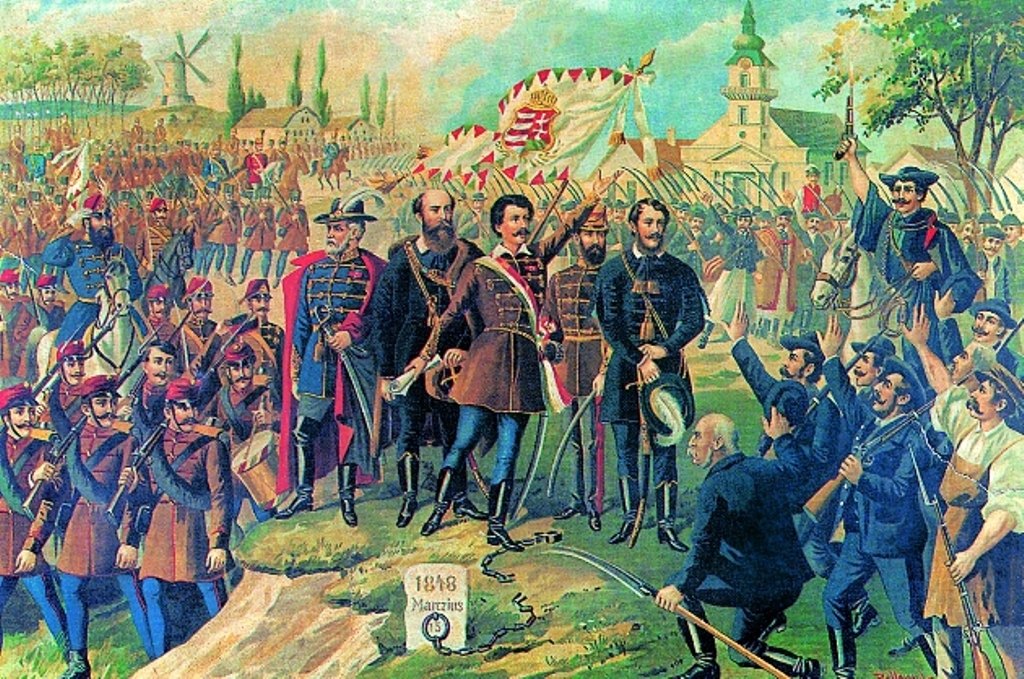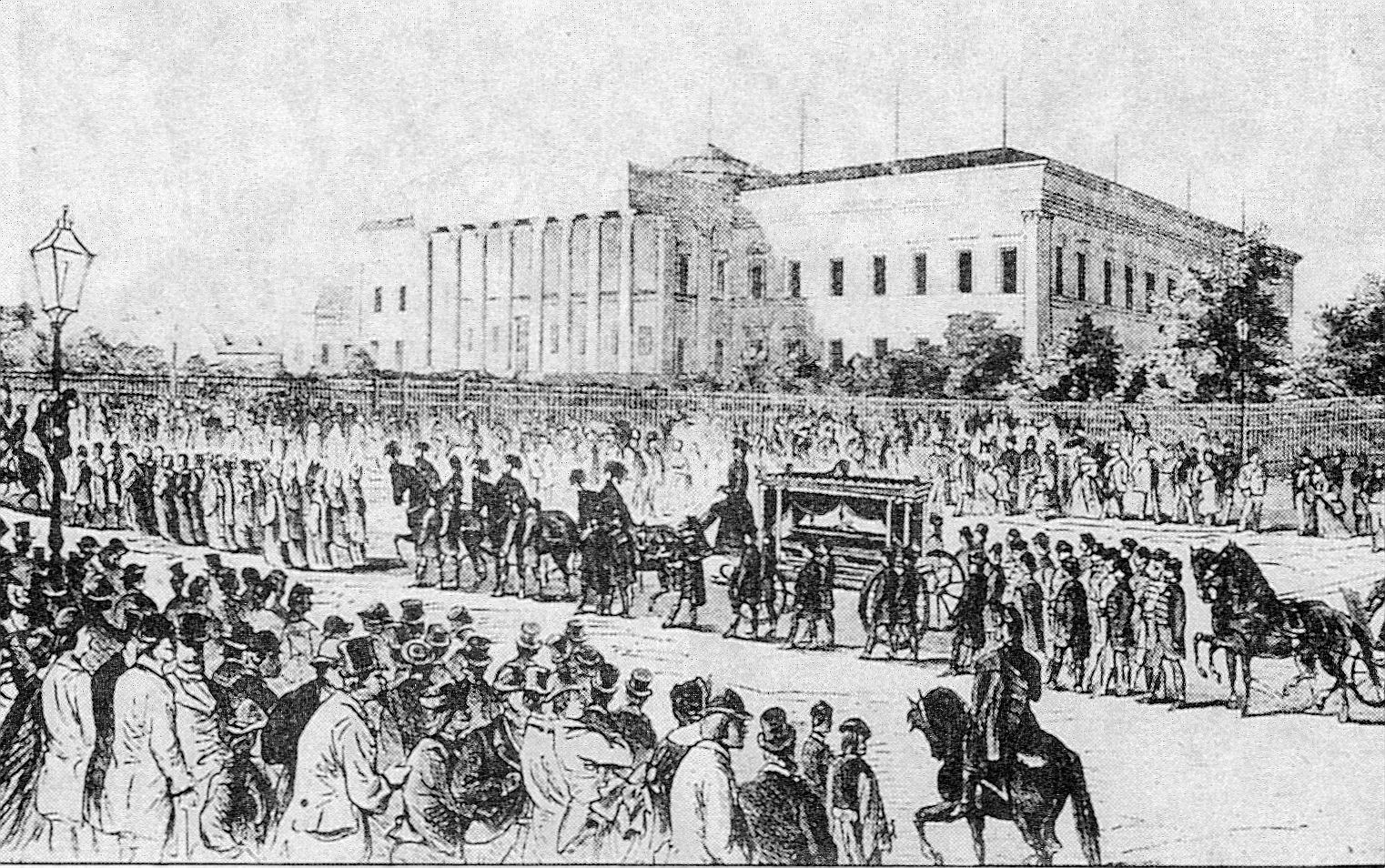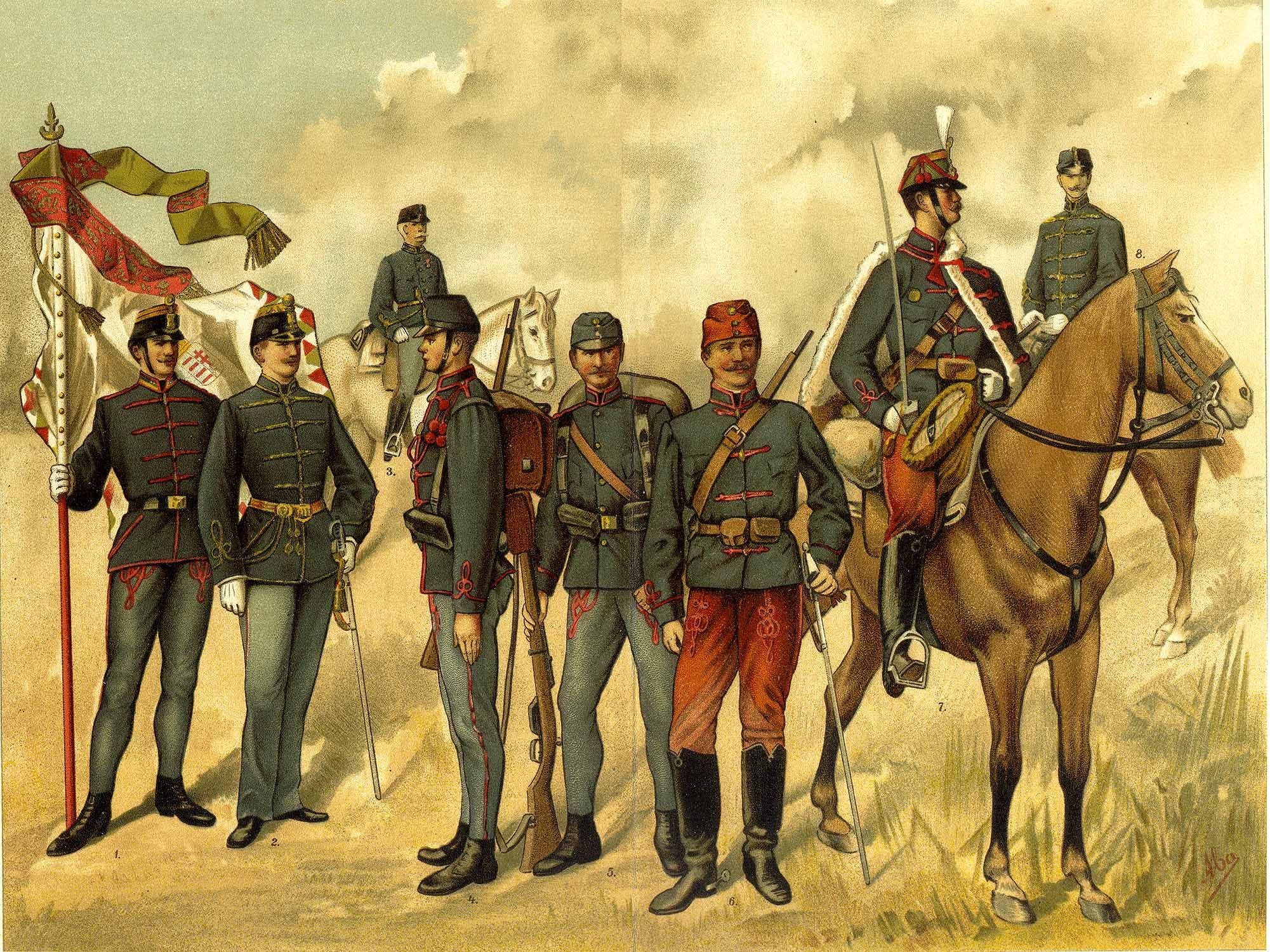On 15 March we celebrate the start of the Hungarian Revolution of 1848 and 1849, closely linked to the events of the Spring of Nations, which to this day remains the most widespread revolutionary wave in European history. As the revolution gained impetus, it quickly grew into a war for independence from the Austrian Empire, and although it eventually was suppressed by the joint forces of Austria and Russia, the failed revolution had planted the seeds of the Austro-Hungarian Empire and a period of unseen prosperity.
… that the Hungarian revolution of 1848 started on 15 March, at Pilvax Café, where Sándor Petőfi wrote and recited his poem, the National Song? The enthused youth walked over to the National Museum, attracting a crowd as the spirit of the revolution spread out between the on-lookers. Petőfi’s poem was read out, and people began to chan the last words of every stanza. The fire of revolution was aflame.
… that Lajos Kossuth, Governor-President of Revolutionary Hungary is the earliest Hungarian in the world who has his voice recorded and preserved on wax cylinders? This was made possible thanks to a speech he gave in Turin, Italy, the place of his exile after the failed revolution, in 1890.

… that Artúr Görgei, who was born in 1818 and died in 1916 after a long and eventful life, was not only the Major General of the Honvéd Army in the Hungarian Revolution of 1848, but a successful chemist as well? Görgei discovered the separation process of fatty acid homologues during his time spent at Prague’s Charles University before the revolution.
… that the revolution had supporters from all around Europe, fighting for an independent and liberal Hungary? One of them was Britishman Richard Guyon, who won several battles as a general in the revolutionary army. His famous encouragement “what are you? A Hungarian? You’re shit, not Hungarian, you deserve shit, not freedom. Forth!” earned him an eternal place in the pantheon of badasses.
… that the flag of Hungary comes from the freedom movement leading to the 1848 revolution? The anti-Habsburg movement was partly inspired by the ideals of the French revolution, and so was the tricolor form of the flag. The colors came from the historical Coat of Arms of the country, with some saying red represents strength, white represents faithfulness, and green standing for hope.

… that the Hungarian army almost caused the whole Habsburg Empire to collapse? After a series of defeats in 1849, the new Emperor Franz Josef had to call for Russian help in the name of the Holy Alliance, a coalition created by the monarchist great powers of Russia, Austria and Prussia after the defeat of Napoleon. Czar Nicholas I sent 200,000 Russian troops against the Hungarians: General Görgei surrendered to the Russians on 13 August at Világos, so that the war would be considered a Russian, and not an Austrian victory.
… that one of the greatest heroes of the revolution wasn’t even a Hungarian? As a man who fought for Polish independence during the aftermath of the November Uprising in 1830, and then later on led the Székely troops in Transylvania to a number of awe-inspiring victories, General Józef Bem is a national hero of both the Polish and the Hungarian nations. In Hungarian he is often called affectionately as Bem Apó (Grandpa Bem), while his statue at Bem József tér was the origo of the Hungarian Revolution of 1956.
… that many of those who went into voluntary exile to the United States continued to lead a politically active lifestyle, while some of them even participated in the US Civil War? Notable Hungarian Forty-Eighters who fought on the Union side include Alexander Asboth, Charles Zágonyi and Julius Stahel, who received a Medal of Honor for gallantry in action at the Battle of Piedmont.

Little do Budapesters know that where present-day Szabadság square stretches, bordered by the beautiful and grand turn-of-the-century buildings, once stood the giant reminder of post-revolution Habsburg tyranny: the Neugebäude (New Building). It was inside this building’s giant courtyard where count Lajos Batthyány, Hungary’s first prime minister was executed. His place of execution is now marked by a sanctuary lamp.